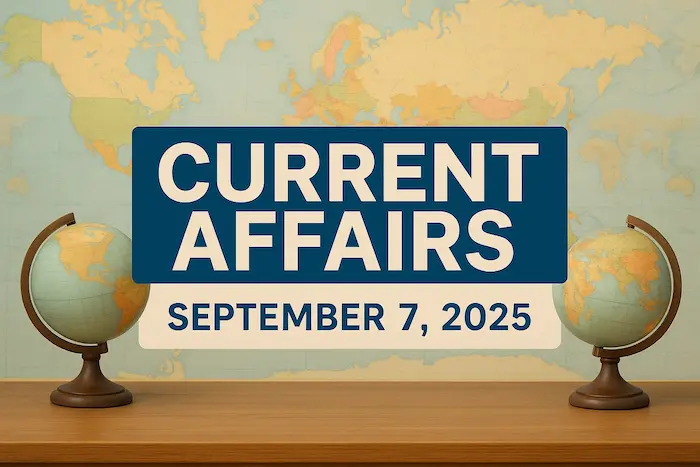1. Centre Approves Independent Class of Environment Auditors – Environment
Why in News?
The Ministry of Environment, Forest and Climate Change (MoEFCC) has notified the Environment Audit Rules, 2025, introducing a new class of independent environment auditors. These accredited private agencies will be empowered to verify compliance with environmental laws, similar to how chartered accountants audit financial matters.
Context and Significance
- India has long struggled with enforcement of environmental laws due to limited manpower and resources at the Central Pollution Control Board (CPCB) and State Pollution Control Boards (SPCBs).
- The new rules address this by bringing in private, certified professionals to share compliance-monitoring responsibilities.
- This move aims to strengthen environmental governance, ensure ease of doing business, and plug existing monitoring gaps.
Main Features of the Rules
- Certification & Registration
- Auditors must be certified and registered via the Environment Audit Designated Agency (EADA).
- Random Assignment
- Auditors will be allotted randomly to projects to reduce bias or conflict of interest.
- Roles & Responsibilities
- Verify compliance of industries/projects with environmental norms.
- Conduct sampling, inspections, and analysis of pollution prevention measures.
- Validate self-reported compliance submitted by project proponents.
- Stakeholders
- Certified Environment Auditor (CEA): Qualified through exam or Recognition of Prior Learning.
- Registered Environment Auditor (REA): Officially licensed to carry out audits.
- EADA: Certifies and registers auditors; maintains online registry.
- MoEFCC: Oversees the system.
- CPCB & SPCBs: Continue with inspections and enforcement support.
Challenges and Way Forward
- While the move enhances transparency and accountability, effective results depend on:
- Strengthening local-level enforcement capacity.
- Avoiding over-reliance on private auditors by ensuring strong oversight.
- Integrating these audits smoothly with existing monitoring systems.
Exam Connect – Possible Questions
Prelims
1. Consider the following about the Environment Audit Rules, 2025:
1.Environment auditors will be appointed directly by project proponents.
2.The Environment Audit Designated Agency (EADA) will certify and register auditors.
3.The role of CPCB and SPCBs will cease once private auditors are operational.
Which of the statements is/are correct?
A.1 and 2 only
B. 2 only
C. 2 and 3 only
D.1, 2 and 3
Answer: B. 2 only
2. Which of the following stakeholders is responsible for certifying and registering environment auditors under the Environment Audit Rules, 2025?
A. Central Pollution Control Board (CPCB)
B. Ministry of Environment, Forest and Climate Change (MoEFCC)
C. Environment Audit Designated Agency (EADA)
D. State Pollution Control Boards (SPCBs)
Answer: C. Environment Audit Designated Agency (EADA)
Mains
1. Discuss the significance of the Environment Audit Rules, 2025 in strengthening environmental governance in India. Highlight the possible challenges in their implementation.
2. How do the newly introduced independent environment auditors aim to complement the role of CPCB and SPCBs? Critically analyze the potential risks of outsourcing compliance to private agencies.
2. Technology Perspective and Capability Roadmap (TPCR-2025) – Defence & Security
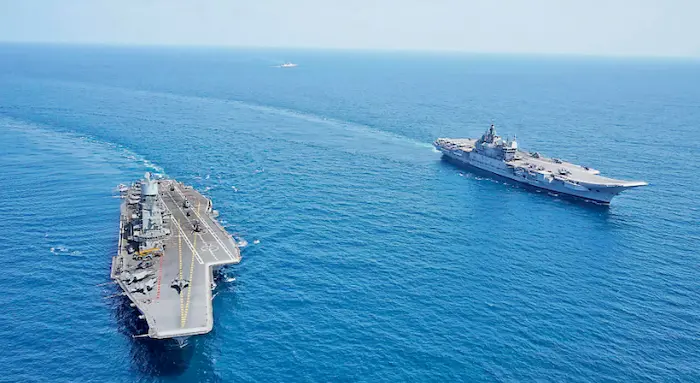
Why in News?
The Ministry of Defence (MoD) has released the Technology Perspective and Capability Roadmap 2025 (TPCR-2025)—a 15-year strategic blueprint designed to modernize the Indian Armed Forces and prepare them for multi-domain future warfare.
Context and Significance
- TPCR-2025 sets the direction for technological modernization across land, sea, air, cyber, and space.
- It provides clarity for India’s defence industry—especially MSMEs, start-ups, and private R&D—on future military requirements.
- Supports Atmanirbhar Bharat by reducing import dependence and boosting indigenous defence manufacturing.
- Ensures Indian Armed Forces remain technologically advanced and combat-ready to face emerging global and regional threats.
Key Features of TPCR-2025
- Strategic Vision
- 15-year roadmap to modernize the Army, Navy, and Air Force.
- Prioritizes future conflicts in multi-domain environments (land, sea, air, cyber, space).
- Nuclear & CBRN Preparedness
- Strengthening nuclear command and survivability infrastructure.
- Development of unmanned CBRN vehicles for crisis response.
- Drones & Unmanned Systems
- Stealth drones with 1,500 km range and altitude capacity of 60,000 ft.
- AI-enabled loitering munitions for precision strike.
- Electronic & Cyber Warfare
- Deployment of advanced jammers.
- Preparedness for cyber and space warfare.
- Service-Specific Modernization
- Army: New main battle tanks, light tanks, UAV-launched precision-guided munitions, electromagnetic weapons.
- Navy: New destroyers, corvettes, mine vessels, and a third aircraft carrier.
- Air Force: Stratospheric airships, long-range cruise missiles.
- Implementation
- Regular consultations between armed forces, industry, MSMEs, and start-ups.
- Emphasis on R&D, innovation, and public-private partnership.
Exam Connect – Possible Questions
Prelims
1. With reference to the Technology Perspective and Capability Roadmap (TPCR-2025), consider the following statements:
1.It provides a long-term strategy for India’s Armed Forces modernization.
2.It focuses only on conventional warfare in land, sea, and air domains.
3. It involves active participation of MSMEs and start-ups in defence innovation.
Which of the above statements is/are correct?
A.1 and 3 only
B.1 and 2 only
C.2 and 3 only
D.1, 2 and 3
Answer: A. 1 and 3 only
2. Which of the following is NOT a focus area under TPCR-2025?
A. AI-enabled loitering munitions
B. Stratospheric airships
C.Renewable energy-based rural electrification
D.Advanced jammers for electronic warfare
Answer: C. Renewable energy-based rural electrification
Mains
1. Discuss the significance of the Technology Perspective and Capability Roadmap (TPCR-2025) in enhancing India’s defence preparedness. How does it align with the Atmanirbhar Bharat initiative?
2. TPCR-2025 emphasizes multi-domain warfare, including cyber and space. Analyze the challenges India faces in these new domains of warfare and suggest measures to overcome them.
3. Indian Science Congress to be Replaced by ESTIC – Science & Technology
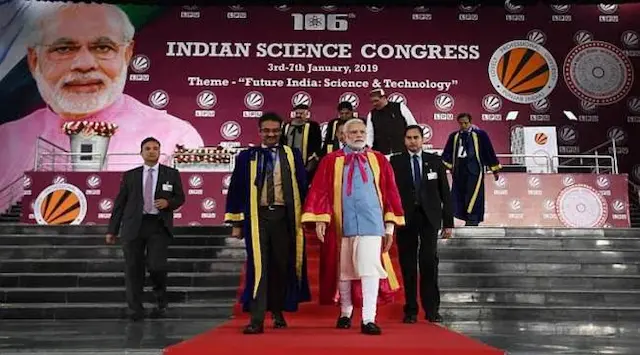
Why in News?
The Government of India has decided to replace the Indian Science Congress (ISC) with a new platform, the Emerging Science, Technology and Innovation Conclave (ESTIC). The first edition will be held on November 3–4, 2025, at Bharat Mandapam, New Delhi.
Context and Significance
- The Indian Science Congress, established in 1914, was once India’s premier forum for scientific dialogue.
- Over time, it lost relevance due to controversies and lack of alignment with national priorities.
- The shift to ESTIC reflects India’s intent to create a structured, innovation-driven, and globally connected science policy platform, aligned with the vision of Viksit Bharat 2047.
Key Features of ESTIC
- Organising Body
- Conducted by the Department of Science and Technology (DST) in collaboration with multiple ministries.
- Focus Areas
- Innovation-driven research linked to national priorities (healthcare, renewable energy, biotechnology, defence tech, etc.).
- Promotes stronger industry-government-scientist collaboration.
- Thematic Sessions
- 11 technical sessions covering space, biotechnology, renewable energy, cyber technologies, and other frontier areas.
- Global Engagement
- International participation, including Nobel laureates and global experts.
- Aims to make India a hub for global science diplomacy and innovation networks.
- Significance of Transition
- Moves away from a largely academic congress to a policy- and innovation-oriented conclave.
- Positions India as a global leader in science, technology, and innovation in line with SDGs and national goals.
Exam Connect – Possible Questions
Prelims
1. Consider the following statements regarding the Emerging Science, Technology and Innovation Conclave (ESTIC):
1.It is organized by the Department of Science and Technology in collaboration with multiple ministries.
2.Its first edition will be held in Bengaluru in November 2025.
3.It seeks to align scientific research with the vision of Viksit Bharat 2047.
Which of the above statements is/are correct?
A.1 and 3 only
B.2 and 3 only
C.1 and 2 only
D.1, 2 and 3
Answer: A. 1 and 3 only
2. The Indian Science Congress, recently replaced by ESTIC, was established in which year?
A. 1905
B. 1914
C. 1920
D. 1935
Answer: B. 1914
Mains
1. Critically evaluate the replacement of the Indian Science Congress with ESTIC. How does this shift reflect India’s evolving priorities in science and technology policy?
2. Discuss the role of platforms like ESTIC in achieving the vision of Viksit Bharat 2047. How can India leverage such initiatives for global scientific leadership?
4. PIB Incentive Scheme to Promote Critical Mineral Recycling – Economy

Why in News?
The Union Cabinet has approved a ₹1,500 crore Incentive Scheme to promote the recycling of critical minerals from secondary sources like e-waste and battery scrap. The scheme falls under the National Critical Mineral Mission (NCMM).
Context and Significance
- India is highly dependent on imports for critical minerals such as lithium, cobalt, nickel, copper, and rare earths.
- Mining projects have long lead times, making recycling a vital short-to-medium-term solution.
- The scheme addresses supply chain risks while also contributing to circular economy, Atmanirbhar Bharat, and sustainable growth.
Key Features of the Scheme
- Financial Outlay
- ₹1,500 crore over 6 years (FY 2025-26 to FY 2030-31).
- Targets
- Establish recycling capacity of 270 kilotonnes annually.
- Yield 40 kilotonnes of minerals per year.
- Mobilize ₹8,000 crore investment and generate ~70,000 jobs.
- Beneficiaries
- Large recyclers, small/new recyclers, and start-ups.
- One-third funds reserved for small/new entrants.
- Feedstock Sources
- E-waste, lithium-ion battery scrap, catalytic converters, industrial scrap.
- Coverage
- Support for new plants and expansion/modernization/diversification of existing units.
- Incentive Structure
- Capex Subsidy: 20% subsidy on plant & machinery (reduced for delayed commissioning).
- Opex Subsidy: Linked to incremental sales over FY 2025-26 baseline (40% in FY 2026-27, remaining 60% later).
- Incentive Caps:
- Large entities – ₹50 crore (₹10 crore max for Opex).
- Small entities – ₹25 crore (₹5 crore max for Opex).
- Eligibility
- Only firms engaged in actual mineral extraction.
- Excludes processors of “black mass” alone.
Expected Outcomes
- Reduce import dependence on critical minerals.
- Strengthen domestic value chain for batteries, electronics, EVs, and renewable energy.
- Boost job creation and sustainable economic growth.
Exam Connect – Possible Questions
Prelims
1. With reference to the Incentive Scheme for Critical Mineral Recycling, consider the following statements:
1.It has a financial outlay of ₹1,500 crore for a period of 6 years.
2.The scheme aims to recycle minerals like lithium, cobalt, nickel, and rare earths.
3.Only firms engaged in actual mineral extraction are eligible for incentives.
Which of the above statements is/are correct?
A.1 and 2 only
B.1 and 3 only
C.2 and 3 only
D.1, 2 and 3
Answer: D.1, 2 and 3
2. Under the new Critical Mineral Recycling Incentive Scheme, what is the annual recycling target capacity?
A. 150 kilotonnes
B. 200 kilotonnes
C. 270 kilotonnes
D. 350 kilotonnes
Answer: C. 270 kilotonnes
Mains
1. Critically analyze the significance of the Critical Mineral Recycling Incentive Scheme in ensuring India’s mineral security and energy transition goals.
2. Recycling of critical minerals is often considered a key pillar of circular economy. Discuss the opportunities and challenges India faces in this domain.
5. India’s Strategic Autonomy in a Multipolar World – International Relations

Why in News?
India’s strategic autonomy—a long-standing principle of its foreign policy—has gained renewed importance amid shifting global power equations. Balancing ties with the U.S., China, and Russia, while representing the Global South, is central to India’s efforts to navigate an unpredictable international order.
Context and Significance
- Strategic Autonomy = India’s ability to take independent foreign policy decisions without being coerced by external powers.
- It is neither isolationism nor alignment—it emphasizes flexibility, adaptability, and sovereignty.
- India’s G20 presidency highlighted its leadership role in advocating for a pluralistic and equitable global order.
Key Dimensions of India’s Strategic Autonomy
- Historical Roots
- Evolved from Non-Alignment Movement (NAM) in the Cold War era.
- Today, it is reframed to address multipolar dynamics.
- Relations with Major Powers
- United States: Stronger partnership in defense cooperation, intelligence sharing, and Indo-Pacific strategy, while maintaining freedom of decision-making (e.g., independent stance on Ukraine war).
- China: Complex mix of deterrence and engagement—border tensions exist, but economic interdependence continues.
- Russia: Despite Western criticism, India sustains energy and defense ties with Moscow—reflecting pragmatism, not allegiance.
- Global South Leadership
- India positions itself as a voice of developing countries.
- G20 presidency reinforced India’s role in shaping a multipolar, inclusive global order.
- Challenges to Strategic Autonomy
- Economic vulnerabilities (energy imports, trade imbalances).
- Geopolitical pressures (China-U.S. rivalry, Russia-Ukraine war).
- Technological & digital dependence on foreign platforms.
Broader Implications
- Strategic autonomy enables India to avoid binary choices in great power competition.
- Strengthens India’s ability to shape global norms in line with its interests.
- Key to balancing developmental priorities with security needs in a multipolar order.
Exam Connect – Possible Questions
Prelims
1. The term “strategic autonomy,” often seen in the context of India’s foreign policy, primarily refers to:
A. India’s pursuit of self-reliance in defense manufacturing
B. India’s ability to take independent decisions in foreign and defense policy without external coercion
C. India’s effort to become a permanent member of the UN Security Council
D. India’s leadership of the Non-Aligned Movement during the Cold War
Answer:B. India’s ability to take independent decisions in foreign and defense policy without external coercion
2. Which of the following recent developments best illustrates India’s practice of strategic autonomy?
A. Signing the QUAD security framework with the U.S., Japan, and Australia
B. Continuing energy imports from Russia despite Western sanctions
C. Joining the Belt and Road Initiative with China
D. Accepting U.S. mediation on border disputes with China
Answer: B. Continuing energy imports from Russia despite Western sanctions
Mains
1. “Strategic autonomy is the defining feature of India’s foreign policy in the 21st century.” Discuss with reference to India’s relations with the U.S., China, and Russia.
2. In the context of a multipolar world, how can India balance its commitment to strategic autonomy with its role as a leader of the Global South?
6. 20 Years of MGNREGS – Governance
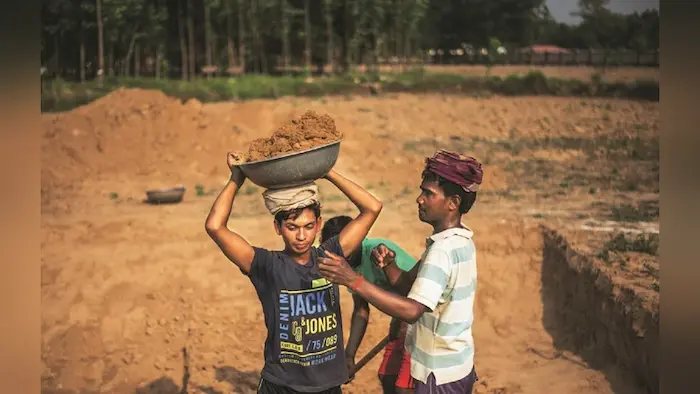
Why in News?
As the Mahatma Gandhi National Rural Employment Guarantee Scheme (MGNREGS) completes 20 years, concerns have resurfaced regarding chronic underfunding in the past decade, despite its central role in rural livelihood security.
Context and Significance
- Launched in 2005, MGNREGS remains India’s largest rights-based social security scheme.
- It guarantees 100 days of wage employment annually to every rural household with willing adult members.
- Over two decades, it has become vital for poverty reduction, gender inclusion, and rural infrastructure creation.
Key Features of MGNREGS
- Origins
- Inspired by Maharashtra Employment Guarantee Scheme (MEGS), 1965.
- National idea first floated by P.V. Narasimha Rao (1991).
- Enacted in 2005 under the UPA government.
- Legal Mandate
- First law in India making employment a statutory right.
- Government has a legal obligation to provide work or pay unemployment allowance.
- Eligibility & Entitlement
- Any adult (18+) in rural areas can demand work.
- Work must be provided within 15 days, within 5 km radius of residence.
- Delays attract compensation.
- Demand-Driven Model
- Worker-initiated; the state must respond to demand.
- Not a welfare dole, but a rights-based entitlement.
- Wages & Implementation
- Minimum wages fixed by states, paid weekly/fortnightly.
- Gram Panchayats are the main implementing agencies.
- Social audits ensure accountability and transparency.
- Women’s Inclusion
- Mandates one-third participation by women.
- Has been effective in empowering rural women economically.
- Sustainable Asset Creation
- Funds are used for durable rural infrastructure: roads, ponds, irrigation canals, plantations, etc.
Achievements
- Provided employment security during crises (e.g., droughts, COVID-19 pandemic).
- Enhanced rural purchasing power and reduced seasonal migration.
- Boosted gender equity and rural asset creation.
Challenges (Highlighted on 20th Anniversary)
- Chronic underfunding → delays in wage payments.
- Political manipulation and corruption at local levels.
- Urban employment demands (no urban equivalent scheme).
- Weak capacity for timely implementation and monitoring.
Exam Connect – Possible Questions
Prelims
1. With reference to MGNREGS, consider the following statements:
1.It guarantees 100 days of wage employment annually to every adult living in urban and rural areas.
2.Gram Panchayats play the primary role in implementing the scheme.
3. At least one-third of the beneficiaries must be women.
Which of the above statements is/are correct?
A.1 and 2 only
B.2 and 3 only
C.1 and 3 only
D. 1, 2 and 3
Answer: B. 2 and 3 only
2. Which of the following correctly explains the uniqueness of MGNREGS compared to other welfare schemes?
A. It is a demand-driven scheme that legally guarantees work as a right.
B. It provides subsidies for agricultural inputs to rural households.
C. It offers skill training for rural youth to promote employment.
D. It provides free health insurance to rural households.
Answer: A. It is a demand-driven scheme that legally guarantees work as a right.
Mains
1. Evaluate the impact of MGNREGS in addressing rural poverty and livelihood insecurity over the last two decades. What challenges threaten its effectiveness today?
2. MGNREGS is often described as both a social security measure and a tool for rural development. Discuss with examples.
7. India–Europe Energy Dynamics: India’s Rising Diesel Exports to Europe – International Relations
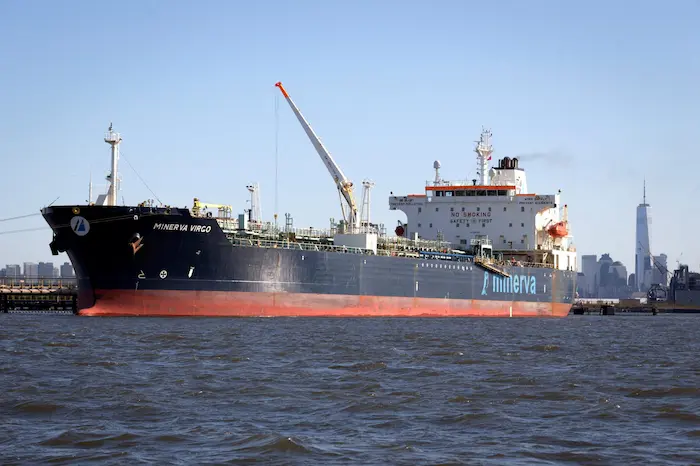
Why in News?
The European Union (EU) will enforce a ban on imports of fuels refined from Russian crude oil from January 21, 2026. Ahead of this, Europe is stockpiling diesel and other petroleum products. India has emerged as a key swing supplier of refined fuels—especially diesel—to Europe, reshaping energy trade relations.
Context and Significance
- The EU’s move is part of sanctions against Russia following the Ukraine conflict.
- India, with its advanced refining capacity, has seized the opportunity, becoming a major supplier of refined products like diesel and aviation turbine fuel.
- This reflects India’s rising role in global energy supply chains and its growing importance to Europe’s energy security.
India’s Petroleum Exports to Europe
- Value: $18.4 billion (April 2023 – January 2024).
- Volume Growth: July 2024 saw a 26% rise in exports to 266,000 barrels per day (bpd).
- Diesel: 238,000 bpd.
- Aviation turbine fuel: 81,000 bpd.
- Historical Growth (2018–19 to 2023–24):
- Over 253,000% increase in export volumes.
- Nearly 250% increase in export value.
Global Context
- Top petroleum exporters: Saudi Arabia (16.2%), Russia (9.14%), Canada (8.48%).
- India: Though not a crude oil giant, has emerged as a refined products hub.
- Types of exports: Diesel, gasoline, naphtha, kerosene, aviation fuel, petrochemicals.
Strategic Importance
- For Europe: Diversification of energy supplies, reduced dependence on Russian crude, and reliable sourcing from India.
- For India:
- Boosts foreign exchange earnings.
- Enhances its status as a reliable global energy partner.
- Strengthens India’s strategic leverage in ties with the EU.
Challenges & Way Forward
- Risk of geopolitical volatility in crude sourcing (India imports crude from Russia, Middle East).
- Need for policy flexibility to adjust to EU regulatory changes post-2026.
- Opportunity to expand refining capacity, diversify export markets, and deepen energy diplomacy.
Exam Connect – Possible Questions
Prelims
1. With reference to India’s petroleum exports to Europe, consider the following statements:
1.Diesel forms the largest share of India’s petroleum exports to Europe.
2.India’s petroleum exports to Europe increased by over 250% in both value and volume between 2018–19 and 2023–24.
3.India is among the world’s top three crude oil exporters.
Which of the above statements is/are correct?
A.1 and 2 only
B.1 and 3 onl
C. 2 and 3 only
D.1, 2 and 3
Answer: A. 1 and 2 only
2. The European Union’s 2026 energy policy shift, which benefits India’s refined fuel exports, is associated with:
A. Ban on Russian crude and refined petroleum products
B. Carbon border adjustment mechanism on steel and cement
C. Expansion of renewable energy trade with India
D. Liberalization of LNG imports from Asia
Answer: A. Ban on Russian crude and refined petroleum products
Mains
1. Analyze how the EU’s upcoming ban on Russian refined fuels creates new opportunities and challenges for India’s energy trade.
2. India is emerging as a “swing supplier” of petroleum products in global markets. Discuss the strategic and economic implications of this role for India–Europe relations.

